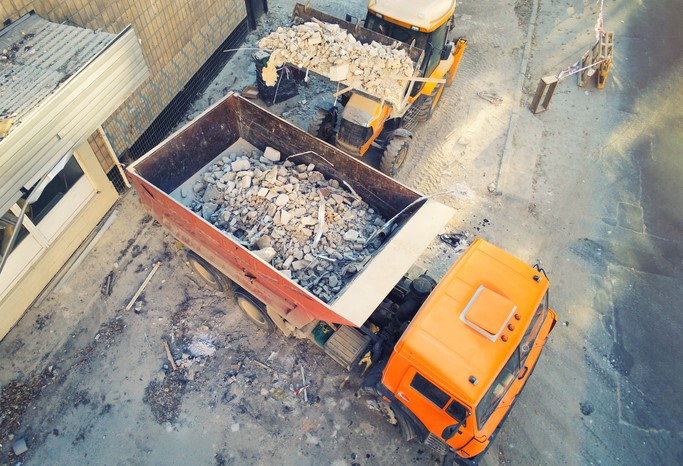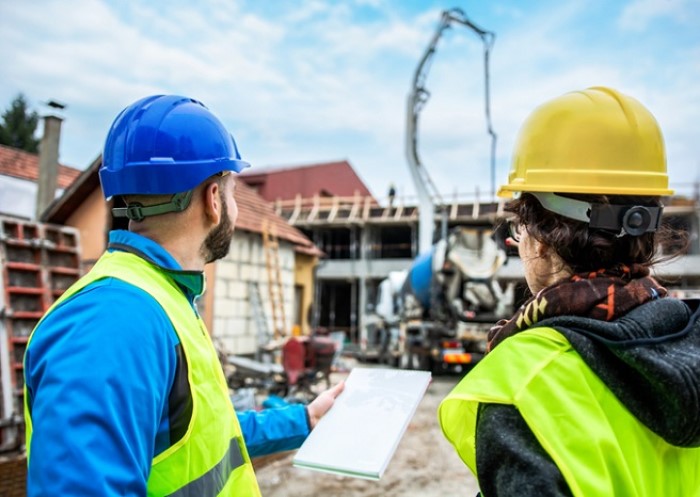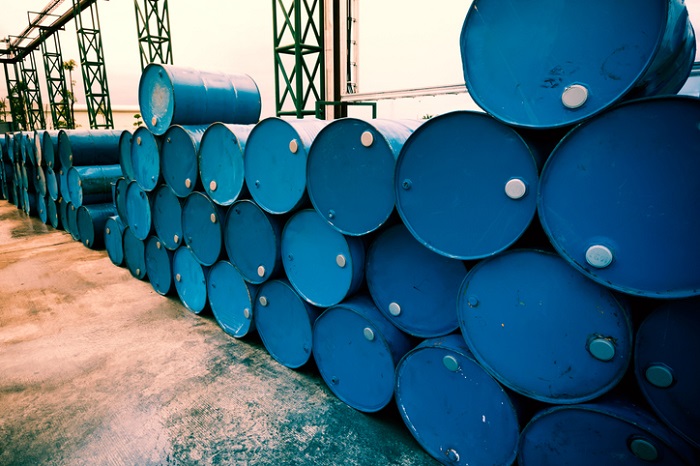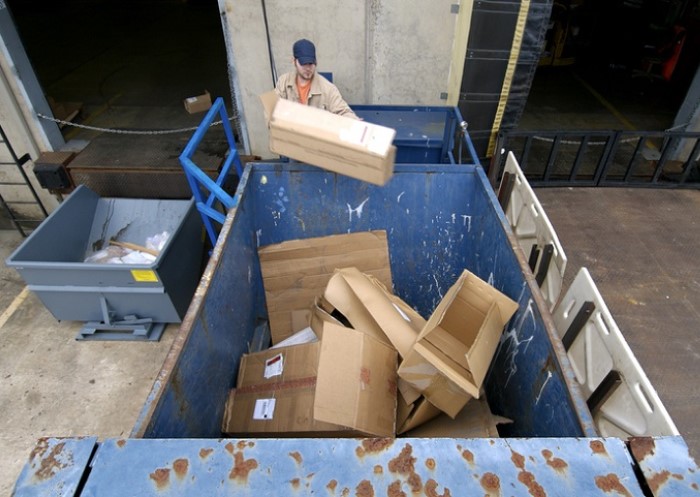Table of contents
Various types of waste and residual materials accumulate on a site during construction, demolition, or renovation work. This is known as construction waste or mixed construction waste and must be disposed of in accordance with the regulations. As with commercial waste, certain regulations apply for disposal. Keep reading to find out more about these regulations, what they apply to and how construction waste disposal such as bricks, concrete or rubble should be dealt with correctly.
Legal regulations for the sorting of construction waste
Each country in the UK has its own guidelines on how construction waste is to be correctly separated. In England and Wales, The Waste (England and Wales) Regulations 2011 determines these sorting measures. The Scottish Environmental Protection Agency (SEPA) also has its own guidelines on what to do with construction waste.
However, there is a lot of common ground between the various building waste disposal regulations for each country. Regulation 12 of the Waste (England and Wales) Regulations 2011 states that businesses importing or producing, collecting, transporting, recovering, or disposing of waste (and those who operate as dealers and brokers) must take all reasonable measures to apply the waste hierarchy when the waste is transferred.
As such, all materials produced on a construction site need to be properly separated and collected, according to how construction waste and commercial waste is classified. This enables construction businesses to plan for the necessary construction waste receptacles, such as rubble containers and waste bins, during the site set-up. In general, all construction site waste must be collected and transported separately.
Construction waste disposal can be done via licenced public waste management companies, who can set up disposal containers or waste bins of different sizes and colour coding systems. They can then collect them again at various stages of the construction process. In addition, it is also possible to hand over building rubble and other residual materials to private disposal companies or recycling plants who can then dispose of them in accordance with regulations.
The Waste Duty of Care guidelines expects waste producers to be responsible for knowing how their waste is disposed of, and for taking steps to ensure those they contract to collect and manage their waste are operating legally. In England, Scotland, Wales and Northern Ireland, waste carriers must apply for a permit to legally deal with construction waste.
What is considered construction waste?
Construction waste includes all solid, non-combustible waste consisting predominantly of mineral materials.
Construction and building waste disposal can include:
- Disposing of paving slabs, rock lumps, natural stones and sand-lime bricks
- Roof tiles, roof slates and brick disposal
- Disposing of masonry and broken masonry
- Concrete and stone rubble disposal
- Disposing of tiles and ceramics
- Mortar, plaster residues and disposing of plasterboard
- Road debris and concrete disposal
- Cement recycling and disposal
Construction waste must not, however, contain any substances that are harmful to health, such as asbestos or tar. If this is the case, the construction waste must be treated as hazardous waste and disposed of separately from other materials and in line with The Hazardous Waste (England and Wales) Regulations 2005. If waste is also mixed with more than 10 % foreign content, it is considered mixed construction waste, which must also be disposed of separately.
How to follow the correct disposal of construction waste by waste type
- Excavated earth and soil
Excavated soil from construction sites should be differentiated according to the soil layers as it is removed. In this way, brown earths, loam, and gravel, for example, can be better sorted and recycled. Excavated earth and soil must be disposed of in specific recycling plants.
In addition, substrates must be differentiated according to contaminated and uncontaminated materials. Soils contaminated with pollutants must be disposed of separately so that they do not pose a risk to health and the environment. Examples include railway ballast and soils soaked with oil and petrol. - Road debris
Road debris that has been removed or broken up should be classified as either non-hazardous or hazardous, depending on the materials it contains. Bituminous and mineral pavements belong to the non-hazardous category. These can be recycled without any problems.
However, materials that contain even the smallest amounts of pitch, such as tar, are classified as polluted. These pose a high environmental risk, which is why contaminated road debris is subject to notification and monitoring obligations and must be disposed of as hazardous waste. - Disposing of mixed construction waste
Mixed construction waste management concerns waste which is not sorted by type and cannot be easily separated or recycled accordingly. These materials often have to be deposited in landfills or recycled for energy in waste incineration plants. The following materials can be disposed of together in one container as mixed construction waste:
• Wood waste and sawdust
• Insulation material
• Foil
• Cables
• Pumice, aerated concrete, and Ytong
• Plaster and plasterboard
• Pipes and radiators
• Doors and window (frames) - Special forms of construction waste: Recyclable materials and artificial mineral fibres (KMF)
Recycling building materials involves separating certain types of waste for reuse. These include polystyrene and packaging material as well as paper and cardboard. Metal scrap can also be completely recycled.
In addition, many KMF insulation elements such as glass fibre and rock wool must be disposed of separately. These materials are considered carcinogenic if they were manufactured before 2000 and do not have an RAL seal. Due to the hazardous fine fibre dust, these building materials must be collected and disposed of separately in dust- and tear-proof bags.
FAQ for construction waste disposal
Construction waste includes all solid, non-combustible construction waste that may be generated during new construction, demolition, or renovation work. The materials often consist of mineral substances, which can be a single compound or mixed. Due to its structure, separated construction waste must be clearly distinguished from mixed construction waste. In addition, the individual debris must not be contaminated with pollutants, but it may be contaminated with materials of non-hazardous substances up to a maximum of 10 %.
Construction waste includes masonry, concrete, bricks, tiles, clinker bricks, natural stones, paving stones, screed, natural slate, toilet bowls, washbasins, cement, plaster, and more.
Mixed construction waste cannot be separated by type. In addition, the building materials are often not safe to be disposed of. Mixed construction waste is more difficult to recycle than separated construction waste, and in some cases, it cannot be recycled at all. The materials must therefore be stored in landfills or recovered for energy in waste incineration plants.
Mixed construction waste includes wood debris, pipes, cables, plasterboard, sheetrock, metals and plastics.
Prices for the individual construction waste disposal companies and container services vary within the UK. However, for general construction waste the costs are around £70 for 150 kg and £270 per 1000 kg. These costs are dependent on labour and may also be subject to VAT. Fees usually include the rental of the container as well as the delivery and collection costs.
Small quantities of building rubble can be dealt with by regional disposal companies. However, for large amounts of rubble, construction waste disposal contracts are best handled by larger scale public or private recycling companies. It may also be possible to properly dispose of accumulated building materials at some local recycling facilities.
Please note: The regulations mentioned above represent only a selection of the most important legal requirements. Please refer to the listed organisations and directives for more detailed information. If in any doubt, consult experts or contact the relevant regulatory authorities.
Image source:
© gettyimages.de – Kyryl Gorlov






